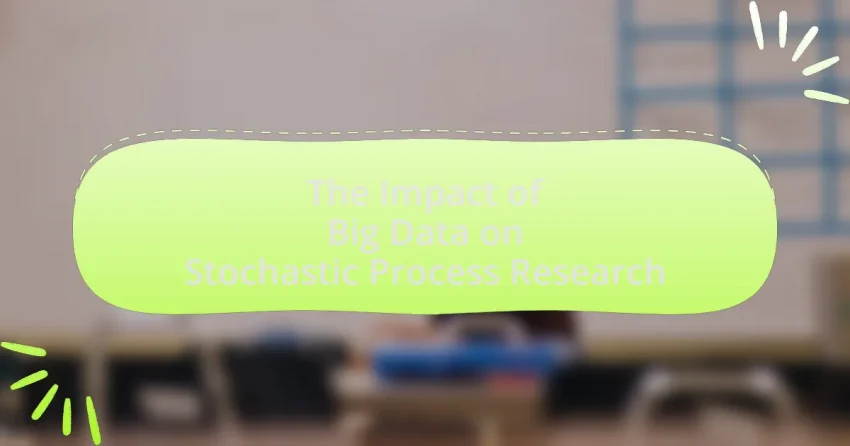Recent trends in stochastic control theory highlight significant advancements in reinforcement learning, robust control, and their applications in finance and robotics. The integration of machine learning techniques has enhanced the ability to solve complex control problems under uncertainty, leading to improved decision-making processes across various sectors. Key developments, such as dynamic programming and stochastic calculus,…
Exploring the Use of Monte Carlo Methods in Project Management
Monte Carlo Methods are statistical techniques utilized in project management to model the probability of various outcomes during project planning and risk assessment. This article explores how these methods apply to project management by simulating uncertainties in project variables such as time, cost, and resource availability. Key principles, advantages, and implementation steps of Monte Carlo…
A Step-by-Step Guide to Estimating Transition Probabilities in Markov Models
Transition probabilities are a crucial component of Markov models, representing the likelihood of transitioning from one state to another within a stochastic process. This article provides a comprehensive guide on estimating these probabilities, detailing the definition and significance of transition probabilities, the role of states, and their influence on model behavior. It outlines the steps…
The Importance of Random Variables in Stochastic Methods
Random variables are essential components in stochastic methods, representing numerical outcomes of random phenomena and enabling the modeling of uncertainty in various fields such as finance, engineering, and environmental science. This article explores the significance of random variables in stochastic analysis, detailing their functions, types, and influence on decision-making processes. It highlights the applications of…
Advanced Statistical Techniques for Analyzing Stochastic Processes
Advanced statistical techniques for analyzing stochastic processes encompass methods such as Markov Chain Monte Carlo (MCMC), Bayesian inference, and time series analysis. These techniques are essential for modeling complex systems characterized by randomness and uncertainty, allowing for improved parameter estimation and forecasting in dynamic environments. The article explores the differences between advanced and traditional statistical…
Applications of Poisson Processes in Telecommunications
Poisson processes are mathematical models that describe random events occurring over time or space, characterized by a constant average rate of occurrence. In telecommunications, these processes are crucial for modeling packet arrivals, call traffic, and system failures, enabling engineers to optimize network performance and resource allocation. The article explores the assumptions underlying Poisson processes, their…
The Role of Probability Distributions in Stochastic Modeling
Probability distributions play a crucial role in stochastic modeling by providing a mathematical framework to quantify uncertainty and variability in random processes. This article explores how different types of probability distributions, such as normal and Poisson distributions, contribute to modeling complex systems across various fields, including finance, engineering, and environmental science. Key characteristics of these…
The Impact of Big Data on Stochastic Process Research
The article examines the significant impact of Big Data on Stochastic Process Research, highlighting how vast datasets enhance model accuracy and predictive capabilities across various fields such as finance, healthcare, and engineering. It discusses key characteristics of Big Data—volume, velocity, variety, veracity, and value—and their influence on research methodologies, emphasizing the necessity for advanced analytical…
Comparing Discrete and Continuous Stochastic Processes in Educational Settings
The article focuses on comparing discrete and continuous stochastic processes within educational settings. It defines discrete stochastic processes as those involving random variables at distinct time intervals, while continuous stochastic processes involve variables defined over continuous time. Key characteristics, differences, and applications of both types of processes are explored, emphasizing their significance in modeling student…
Understanding the Law of Large Numbers through Simulation
The Law of Large Numbers is a fundamental principle in probability theory and statistics, stating that as the number of trials in a random experiment increases, the sample mean will converge to the expected value. This article explores the significance of the Law of Large Numbers, its application in statistical inference, and its distinction from…









